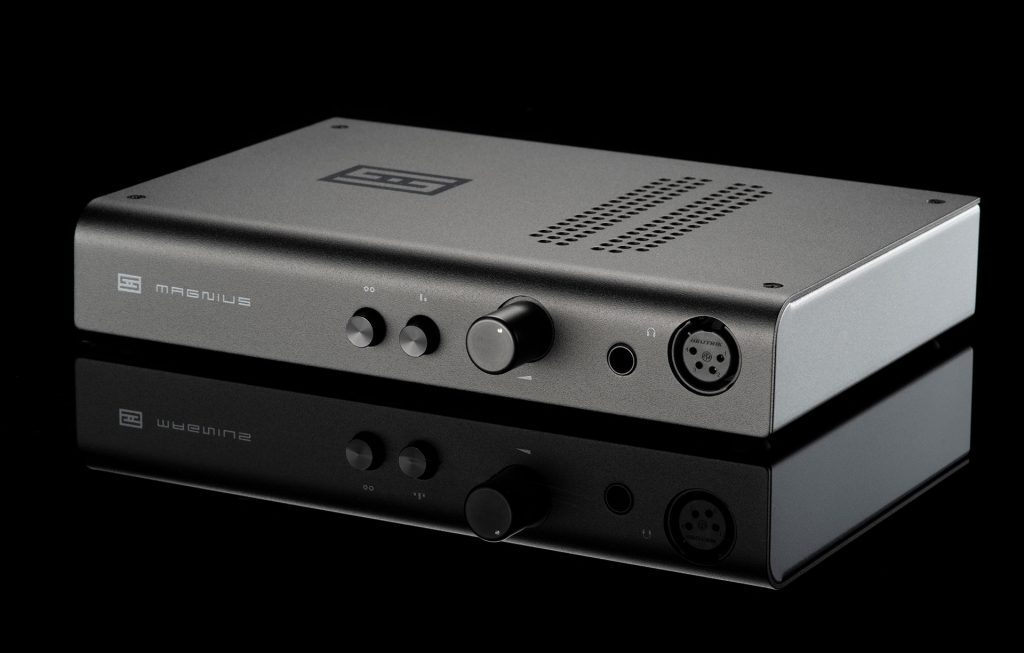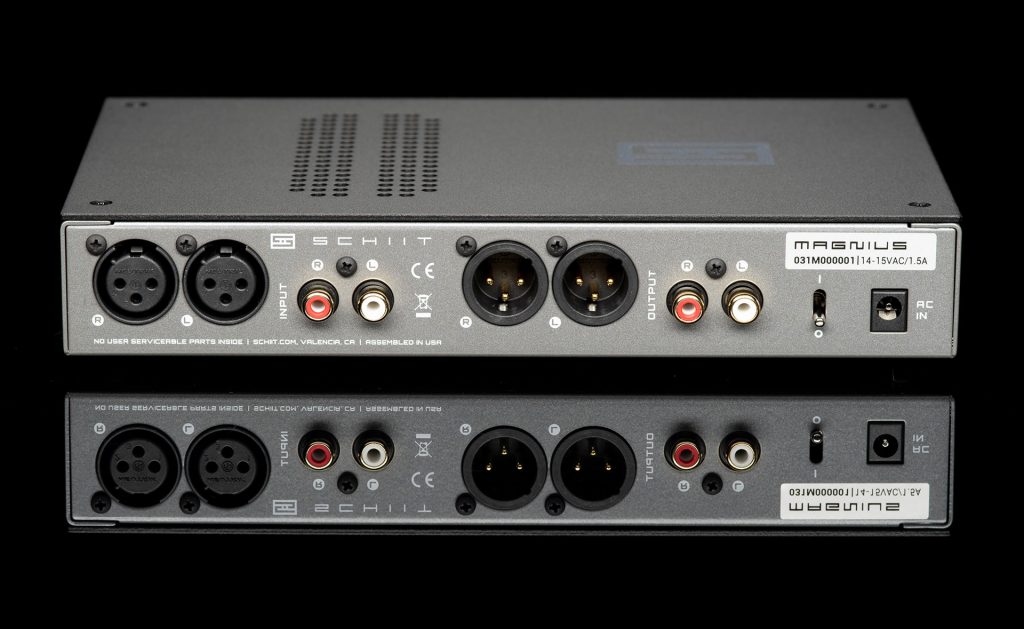One of the biggest struggles with reviewing something like a DAC is controlling variables. Some people will have better quality amplifiers, headphones and other accessories and many more will have significantly worse equipment, making it hard to properly gauge what experience you can reasonably expect based off a review. Thankfully, following our review of the Schiit Modius DAC, they released a companion headphone amplifier, the Magnius, a product intended to pair perfectly with each other. Having done some extensive testing, a wide variety of headphones and more, is it worth investing in or could it be better?
Unsurprisingly, Schiit provided the same packaging experience to the Magnius as they did with Modius. Everything is included in a non-descript cardboard box that has a single sticker indicating which product was inside. Upon opening it, the Magnius is wrapped in a single plastic cover, held in place by two foam inserts. It isn’t much to look at, but given Schiit is all about maximizing value, it’s a welcome compromise.

Since both the Magnius and Modius were designed side by side, they look very similar. Not only is it the exact same size, making it perfect to stack them one on top of the other, their front layouts look like they go with one another. While we were given the silver version of the Modius, Schiit is only making Magnius, at least currently, with the black finish. It doesn’t look bad paired with the silver, it just isn’t as unified as it does with black. The finish also feels different. Instead of being slick like the silver version, it’s rough and has a textured feeling. It also fairs better in the light, reflecting less light due to the more matte finish. On the back there are a small number of inputs and outputs, basically making it easy to go directly from an audio source or something like a DAC. I strongly suggest pairing it with something like Modius, simply because the included digital optical makes it easy to implement with gaming and USB connect makes it extremely versatile.
Unfortunately, the sleek look works against the Magnius. Without the manual, it’s honestly not as intuitive as you might think. With two buttons, a dial, and two outputs, one being a 1 / 4 headphone jack and the other XLR, there are only so many options. What you need to figure out or remember is the first button changes inputs and the second increases the power output. The rest is simple, it’s just the type of thing where changing anything might make it hard to remember how things work or anyone looking to better control the volume might need to remind themselves, though the icon for power is somewhat easy to understand. Perhaps my least favorite design choice was putting the power switch on the back with very little to tell you when it is and is not on. Even with a rather open concept, it can be hard to hit it without messing with other things, like the headphones I keep on top of them, and unless I stand above it or have the volume high enough to hear my headphones playing, it’s fairly easy to forget it is on.
However, the most used control, volume, feels oddly satisfying to mess with. Unlike my other amplifiers, this knob has a fair amount of resistance. Turning it is slow, precise and is legitimately difficult to hit an extreme if you don’t rush to increase the volume. Even during more casual play sessions, it was simple to increase it for more subdued songs and decrease it for more impactful songs or commercials. All of this makes for an interesting experience but it doesn’t mean anything if it fails to drive the experience you want.

When using both the Magnius and Modius together, it made for a pretty good experience regardless of how high or low the end I went. Not only did it increase the sound stage and help bring out certain experiences, most notably Square Enix large orchestra tracks, though even simpler songs received a much-needed bump in quality. Best of all, this pair brings out what your headphones can do, over trying to mix things in a way that may or may not be more satisfying. As a result, when I was listening to songs with lots of highs, with very little lows, on headphones that specialize in this area, things like the low end did not dominate the high like you sometimes see on similar devices.
For power, I didn’t run into any situation where I needed to go anywhere near the max. Regardless of using my finest headphones or more demanding, I still stopped relatively short of the max and had no issue achieving the performance I was looking for. This makes it especially good for situations where you want to hear finer details or get the most out of sets with larger drivers. For gaming, it really stands out, mostly due to the ability to bring out things like footsteps, without overpowering the room.
Schiit Magnius Verdict
It is really only so much you can say about an amplifier. Anyone looking to build a pretty good DAC and amplifier combo without spending too much should seriously consider the Schiit Modius and Magnius pairing. They performed fairly well be it gaming, music, or even shows. While the button arrangement and icons could be a bit better, the look, feel, and overall performance more than makeup for it.
[Editor’s Note: Schiit Magnius was provided to us for review purposes.]
